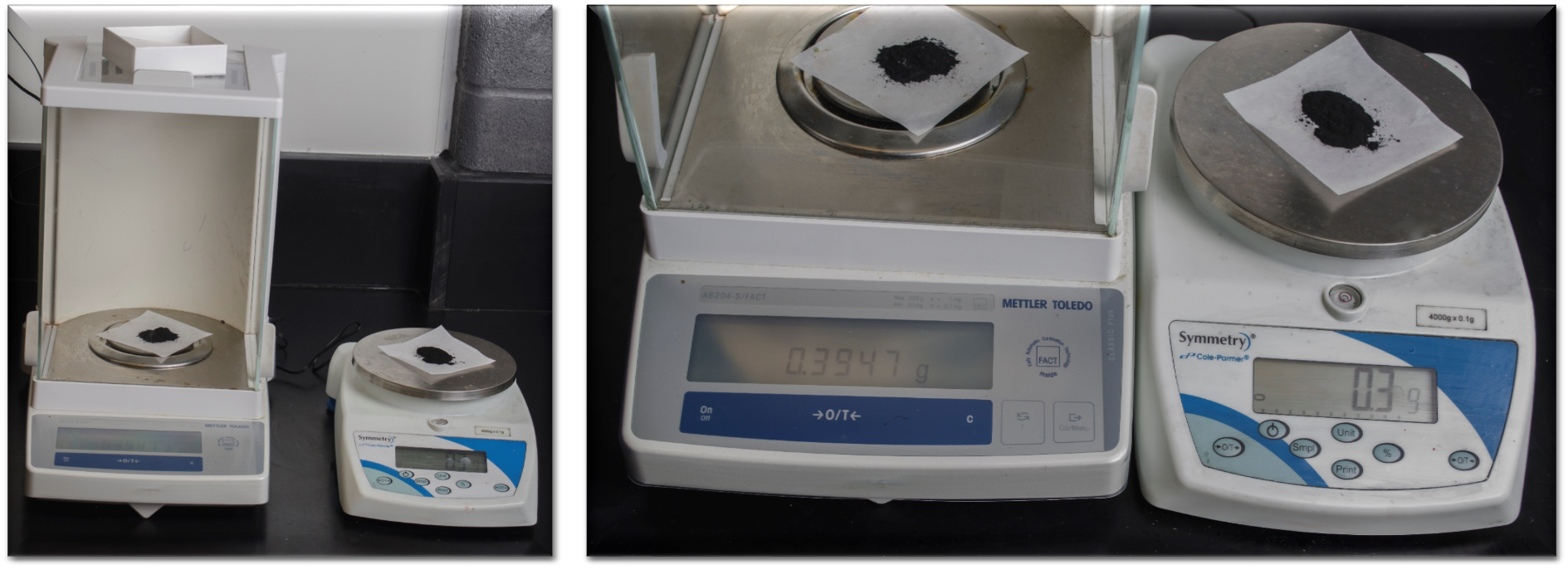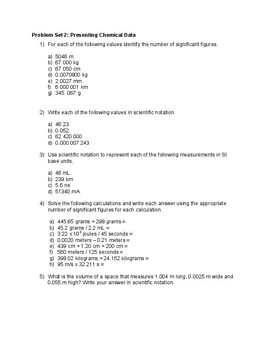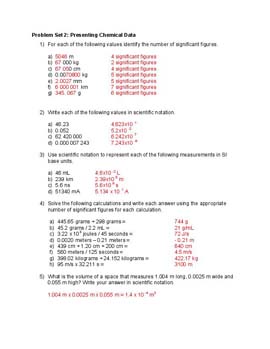Apply your Knowledge
Learn the theory at your own pace, try examples and test your new abilities with the quiz.
(Click/Tap the banner to open.)
Presenting Chemical Data Theory
Measurement
A numeric quantity in which every digit, except the last, is certain. The last digit is estimated, leading to an uncertainty in the measurement.
Exact Number
A number with an unlimited amount of significant figures.
Significant Figures
The number of non-place holding digits in a reported measurement. A larger amount of significant figures means a larger precision in the measurement.
Measurement Reliability
The last digit in a reported scientific measurement is estimated. The instrument used for measuring dictates the number of digits used in the reported measurement.

Exact Numbers
Numbers that have no uncertainty, and an unlimited number of significant figures. Exact numbers do not affect the outcome of significant figures in a calculation. Exact numbers are derived in the following way:
1.
Accurate counting of discrete objects
There are 4 apples = 4.000000… apples
2.
From defined quantities
There are 60 seconds in 1 minute = 60.000000… s in 1.000000… min
3.
From integral numbers in an equation or calculation
The formula for kinetic energy is \(E_{k} = \frac{1}{2} mv^{2}\). In this case, \(\frac{1}{2}\) is an exact number, whereas mass and velocity are measured numbers.
Significant Figures
An accepted method for preserving the precision of a measurement when recording data or doing calculations.
1.
Non-zero digits are significant.
2.
Exact numbers are significant.
3.
Contained zeros are significant.
4.
Leading zeros are not significant.
5.
Trailing zeros have significance as follows:
a.
After a decimal point, significant
b.
After a non-zero number and before a decimal point, significant
c.
After a non-zero number that in not a decimal number, generally a place holder
For an even more detailed breakdown on significant figures click the button below to view.
Rounding
When completing a series of calculations carry extra digits through to the final answer then round to the correct amount of significant figures.
Multiplication and Division
The reported result of a calculation when multiplying or dividing significant figures has the same number of significant figures as the least precise number used in the calculation.
Addition and Subtraction
The reported result of a calculation when adding or subtracting significant figures has the same decimal place as the least precise number used in the calculation.
In this context the least precise number has the smallest number of decimal places
A notation for expressing large and small numbers as a small decimal between one and ten multiplied by a power of ten.
How to write using scientific notation:
1.
Move the decimal point to the left or right to reach a decimal number between one and ten.
2.
Write the number obtained in step 1 multiplied by 10 raised to the number of places the decimal point was moved.
2a.
If the decimal is moved to the left, the power is positive.
Example: \(140000 = 1.4\)x\(10^{5}\)
2a.
If the decimal is moved to the right, the power is negative.
Example: \(0.000014 = 1.4\)x\(10^{-5}\)
Calculations with Scientific Notation
Addition
Rewrite all of the numbers in the calculation such that the exponent is the same. Add or subtract the decimal number.
Multiplication
Multiply the decimal numbers and add the exponents.
Division
Write out as a fraction, divide the decimal number and subtract the exponent in the denominator from the exponent in the numerator.
Using a Scientific Calculator
Generally scientific calculators have an EE or EXP button they both mean: x \(10^{n}\). For n < 1, a negative sign is used before entering the value of n

